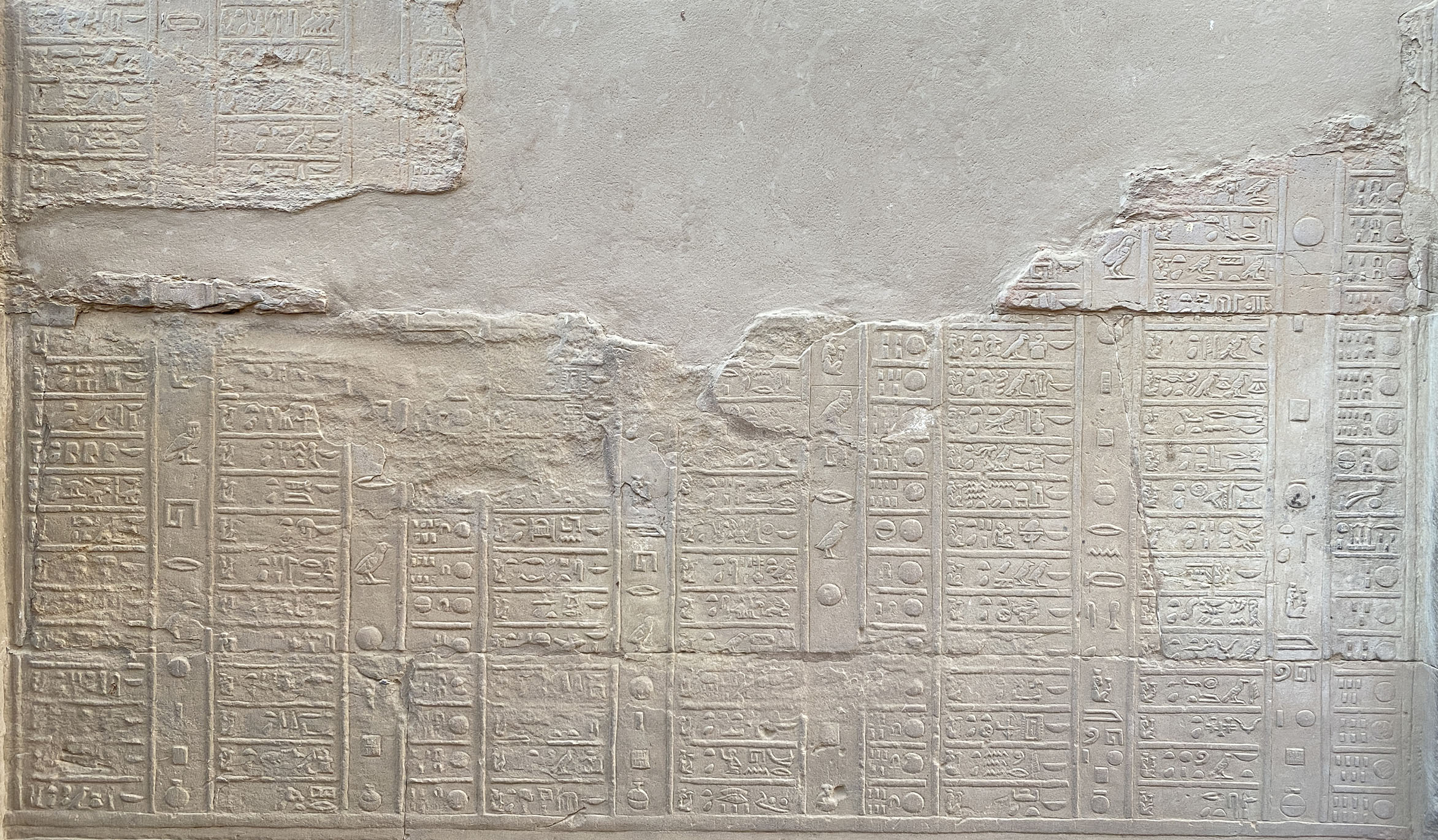Egyptian calendar
The ancient Egyptian calendar – a civil calendar – was a solar calendar with a 365-day year. The year consisted of three seasons of 120 days each, plus an intercalary month of five epagomenal days treated as outside of the year proper. Each season was divided into four months of 30 days. These twelve months were initially numbered within each season but came to also be known by the names of their principal festivals. Each month was divided into three 10-day weeks, which the Greeks called decades.
Because this calendrical year was nearly a quarter of a day shorter than the solar year, the Egyptian calendar lost about one day every four years relative to the Gregorian calendar. It is therefore sometimes referred to as the wandering year (Latin: annus vagus), as its months rotated about one day through the solar year every four years. Ptolemy III's Canopus Decree attempted to correct this through the introduction of a sixth epagomenal day every four years but the proposal was resisted by the Egyptian priests and people and abandoned until the establishment of the Alexandrian or Coptic calendar by Emperor Augustus. The introduction of a leap day to the Egyptian calendar made it equivalent to the reformed Julian calendar, although by extension it continues to diverge from the Gregorian calendar at the turn of most centuries.
This civil calendar ran concurrently with an Egyptian lunar calendar which was used for some religious rituals and festivals. Some Egyptologists have described it as lunisolar, with an intercalary month supposedly added every two or three years to maintain its consistency with the solar year, but no evidence of such intercalation before the 4th century BC has yet been discovered.
Pre-history
Current understanding of the earliest development of the Egyptian calendar remains speculative.
With its interior effectively rainless for thousands of years, ancient Egypt was "a gift of the river" Nile, whose annual flooding organized the natural year into three broad natural seasons known to the Egyptians as:
- Inundation or Flood (Ancient Egyptian: Ꜣḫt, sometimes anglicized as Akhet): roughly from September to January.
- Emergence (Prt, sometimes anglicized as Peret): roughly from January to May.
- Low Water or Harvest (Šmw, sometimes anglicized as Shemu): roughly from May to September.
As early as the reign of Djer (c. 3000 BC, Dynasty I), yearly records were being kept of the flood's high-water mark. Otto E. Neugebauer noted that a 365-day year can be established by averaging a few decades of accurate observations of the Nile flood without any need for astronomical observations, although the great irregularity of the flood from year to year and the difficulty of maintaining a sufficiently accurate Nilometer and record in prehistoric Egypt has caused other scholars to doubt that it formed the basis for the Egyptian calendar.
Civil calendar
The civil calendar was established at some early date in or before the Old Kingdom, with probable evidence of its use early in the reign of Shepseskaf (c. 2510 BC, Dynasty IV) and certain attestation during the reign of Neferirkare (mid-25th century BC, Dynasty V). It was probably based upon astronomical observations of Sirius, whose reappearance in the sky closely corresponded to the average onset of the Nile flood through the 5th and 4th millennium BC. A recent development is the discovery that the 30-day month of the Mesopotamian calendar dates as late as the Jemdet Nasr Period (late 4th-millennium BC), a time Egyptian culture was borrowing various objects and cultural features from the Fertile Crescent, leaving open the possibility that the main features of the calendar were borrowed in one direction or the other as well.
The civil year comprised exactly 365 days, divided into 12 months of 30 days each and an intercalary week of five days, were celebrated as the birthdays of the gods Osiris, Horus, Set, Isis, and Nephthys.
Dates were typically expressed in a YMD format, with a pharaoh's regnal year followed by the month followed by the day of the month. For example, the New Year occurred on I Akhet 1.
The civil calendar was apparently established in a year when Sirius rose on its New Year (I Akhet 1) but, because of its lack of leap years, it began to slowly cycle backwards through the solar year. Sirius itself, about 40° below the ecliptic, follows a Sothic year almost exactly matching that of the Sun, with its reappearance now occurring at the latitude of Cairo (ancient Heliopolis and Memphis) on 19 July (Julian), only two or three days later than its occurrence in early antiquity.
Weeks
Each week of the year was ruled over by one of the 36 Egyptian decans. The ruler of a given week was held to be whichever decanal star was rising heliacally at the beginning of that week.
